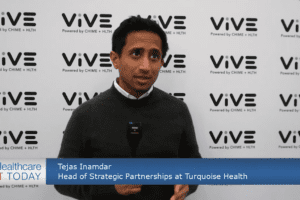 The following is a guest article by Ali Williams, Freelance Writer
The following is a guest article by Ali Williams, Freelance Writer
With there now totaling 171 million users of virtual reality (VR) around the globe, this innovative technology is revolutionizing almost every industry – and healthcare marketing is no exception. Since the healthcare sector is constantly evolving, marketers need to work to stay on top of new trends to create successful marketing campaigns. VR tech is a useful tool that can help you better engage with your target market, provide educational experiences, and open up new opportunities for growth.
Automatic Data Collection
Effective market research is the backbone of any successful healthcare marketing strategy. And VR tech can now help marketers take market research to the next level. In particular, VR lets you automatically record physical movements to exact measurements; this recording is hidden and occurs over long periods of time. Not only is there therefore no longer the need to monitor human behavior via traditional, convoluted methods of observation, but VR can provide even greater insight into the subtleties of human behavior. For instance, with VR researchers can track eye movements that indicate subconscious, underlying feelings.
Additionally, researchers can monitor nonverbal body language, including how close people stand to each other while interacting, whether or not they’re facing to or away from each other, whether they have their arms open or crossed, and whether they’re making direct eye contact. Keep in mind, it’s often what people don’t say that conveys the most information. How people move, act, and interact with people or objects can generate insight into their psychological states. In turn, with this data, you can better understand patient needs, improve services, and refine your marketing strategy as needed.
Immersive Tours
VR tech also lets you engage with patients in fresh, new ways by providing immersive tours. Online video tours have long been a staple in clinic and hospital marketing – however, they typically involve passive viewing alone, rather than providing an immersive experience. VR, on the other hand, paves the way for virtual, immersive tours. For instance, Perth Children’s Hospital uses VR tech to host 360-degree tours. Patients and families can become familiar with the facility layout, and discover exactly what to expect during their appointment or stay.
Most importantly, immersive tours can provide patients with an excellent first impression of the facility, and provide them with peace of mind they’re in safe hands. In particular, hospital superbugs – drug-resistant strains of parasites, viruses, bacteria, and fungi – infect around three million people every year in the United States. As stories surrounding these bugs are often in the media, they can be a real and understandable concern for patients. Effective cleaning and hygiene protocols in medical environments are therefore essential to minimize infection risk and keep patients safe. VR can also help in this regard by showing patients just how clean and hygienic a facility is, quelling anxiety, and building patient trust.
Educational Experiences
Product launches – from new drugs to healthcare tech – play a huge role in the need for healthcare marketing. With VR, marketers can better help patients understand how a new product can positively impact their health and quality of life. GlaxoSmithKline, for instance, used VR in their marketing campaign for Excedrin Migraine medication. In the “Migraine Experience”, VR was used to educate the general public on the severity of migraines – they’re “more than just a headache”. People who don’t usually get migraines had the opportunity to experience the common symptoms first-hand – including, blurred vision, disorientation, and sensitivity to sound and light. With their new medication, GlaxoSmithKline also made sure to establish themselves as the solution to the pervasive problem of migraines (currently affecting 39 million people in the United States). Participant reactions were also filmed and compiled into an impactful marketing video that’s been viewed on social media over twelve million times.
There’s no doubt VR technology is revolutionizing healthcare marketing. Automatic data collection, immersive tours, and educational experiences are just some of the most effective ways you can incorporate VR into your marketing strategy, and therefore better impress and engage patients, and stay ahead of the competition.













